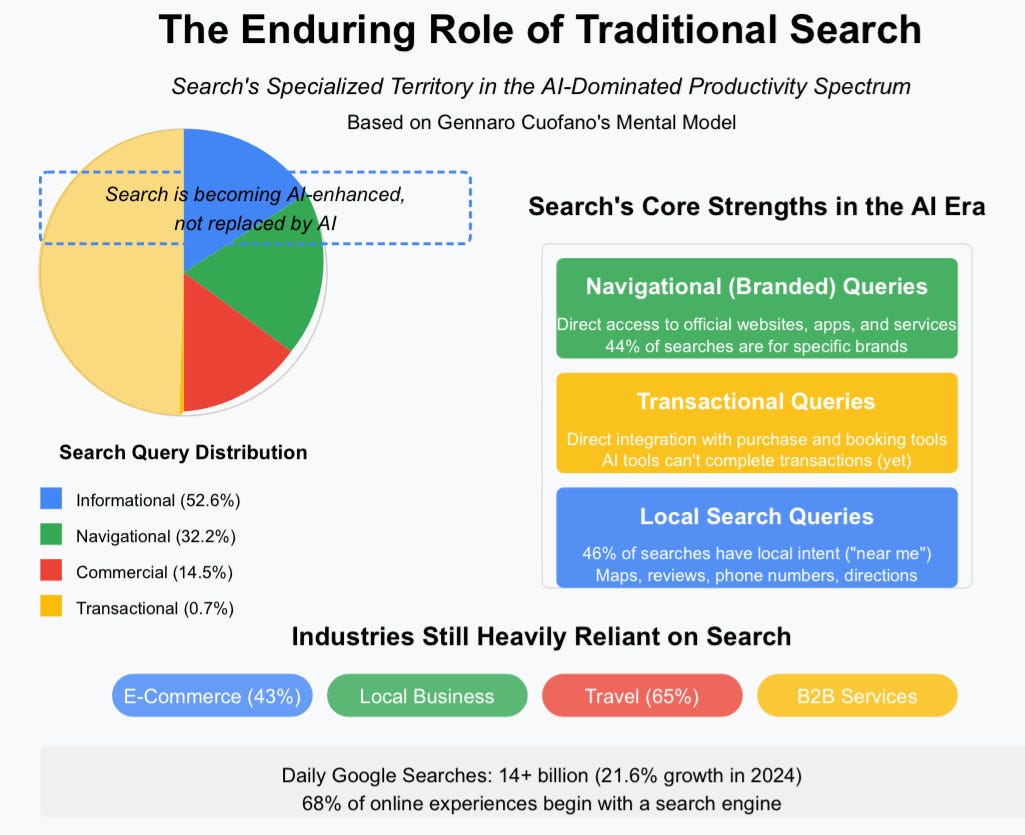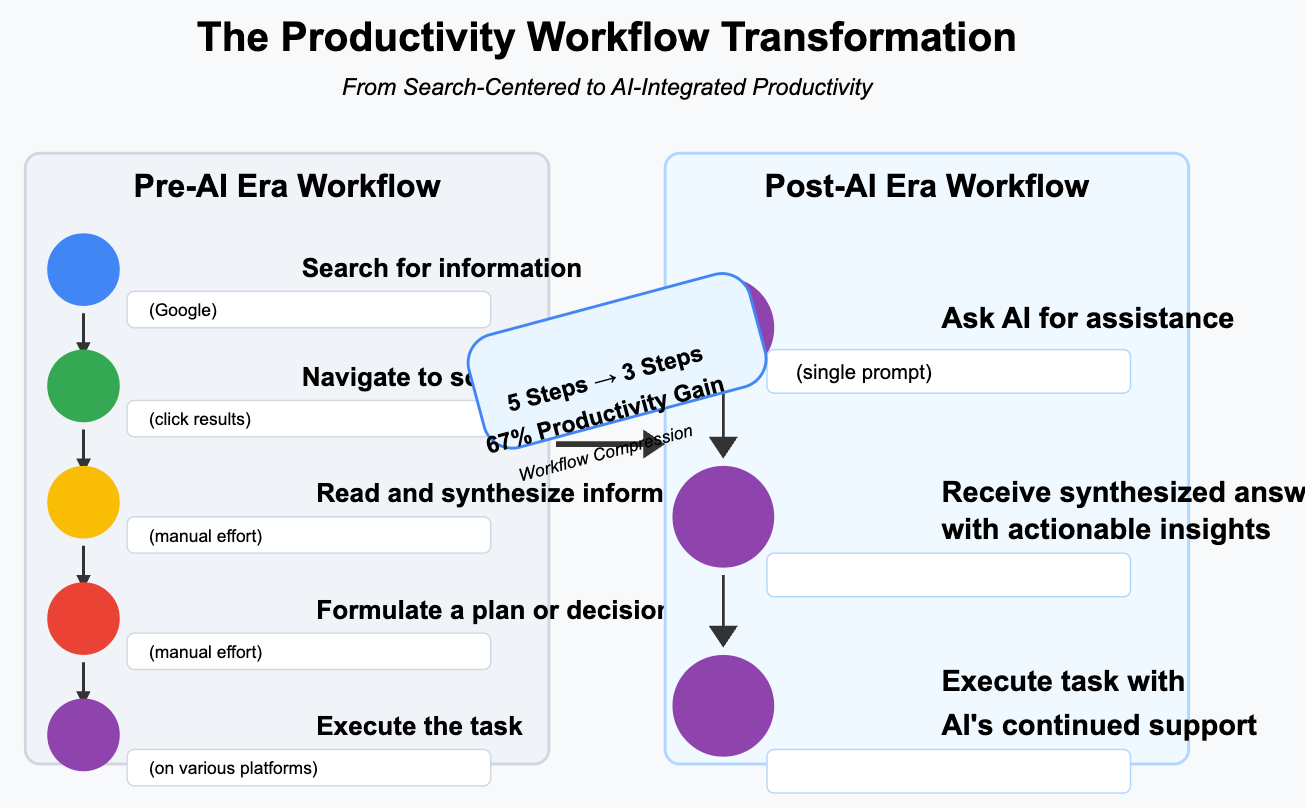AI & The Productivity Spectrum
In Google Search & The Productivity Spectrum, I’ve highlighted the main mistake when analyzing a market: treating it as if it exists in a vacuum.
For instance, search developed at a time when it could solve a key issue: enabling a growing number of users of the nascent commercial Internet to quickly find information in the plethora of web pages that went from millions to billions.
In other words, as content on the web grew exponentially, identifying which content was good enough to be indexed, ranked, and served to users based on their intent has become a staple of the last thirty years.
Yet incumbent markets, like search, exist because they made sense in the context in which they developed.
However, that is the key point: that specific market was developed to solve a specific need that, at that moment, could be solved based on the available tech.
Eventually, as search has become a dominant market, and Google captured the lion’s share of it, we ended up thinking that search is something we can’t live without.
But, we need to ask the more fundamental question: What was the purpose of Google search?
If we go by the “expert answer,” we classify the real world into query types, which tells us that Google search will always be around.
But this fallacy misses the fundamental question of why the search industry existed in the first place.
I argue, it’s all about the “productivity spectrum.”
In short, search has helped users for 30 years as a productivity tool, helping them perform simple to more complex tasks.
You needed to perform a legal search. You started with Google and used it to find the most relevant information to finalize your research. Then, you checked the sources by leveraging Google.
You needed to perform a financial analysis. You started with Google, gathered the most relevant information to finalize the report, and then returned to Google to confirm its accuracy.
That was then. Indeed, now, with AI in the loop, the whole productivity workflow has changed.
And we’re only at the start of this shift in the productivity spectrum.
What began as a tool-based interaction has evolved into increasingly autonomous systems reshaping how we work.
This evolution can be understood through three paradigms: Human-in-the-Loop, Human-Looped-in, and Agentic AI.
Human-in-the-Loop (Past): The Era of AI Tools
This is part of an Enterprise AI series to tackle many of the day-to-day challenges you might face as a professional, executive, founder, or investor in the current AI landscape.








